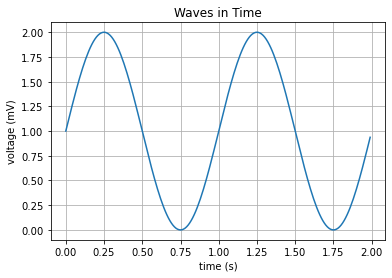You can specify Jupyter content in your markdown, which allows you to execute computation using MyST’s notebook execution engine.
You can define two types of markdown-based computation:
- code cells: for block-level content
- in-line expressions: for content inline with surrounding text
import matplotlib.pyplot as plt
import numpy as npCode cells with the {code-cell} directive¶
You can use the code-cell directive to create block-level computational outputs in MyST Markdown.
{code-cell} directives have the following form:
```{code-cell} LANGUAGE
:key: value
CODE TO BE EXECUTED
```LANGUAGEdefines the language to be used in executing the code.:key: valuepairs will be treated as cell-level metadata.CODE TO BE EXECUTEDwill be executed by theLANGUAGEkernel at build time.
For example, the following directive inserts a code cell into the page, and will be executed if you specify --execute with your MyST build.
```{code-cell} python
hello = "hello"
there = "there"
phrase = f"{hello}, {there}!"
print(phrase)
```hello = "hello"
there = "there"
phrase = f"{hello}, {there}!"
print(phrase)hello, there!
Add tags to {code-cell} directives¶
You can add tags to the {code-cell} directive.
They will be parsed and used in the same way that cell tag metadata is used in .ipynb files.
For example, the following code defines a remove-input tag:
```{code-cell} python
:tags: remove-input
print("This will show output with no input!")
```and results in the following:
This will show output with no input!
This can be particularly helpful for showing the output of a calculation or plot, which is reproducible in the source code, but not shown to the user.

For multiple tags you have two ways to provide them:
If you specify argument options with
:, tags will be parsed as a comma-separated string. For example:```{code-cell} python :tags: tag1, tag2,tag3 # Note that whitespace is removed from tags! print("howdy!") ```If you specify argument options with YAML, tags should be given as a YAML list. For example:
```{code-cell} python --- tags: - tag1 - tag2 --- print("howdy!") ```
For more about how to specify directive options, see MyST Syntax Overview.
Inline expressions with the {eval} role¶
You can use the {eval} role to evaluate code that is surrounded by text.
This allows you to quickly insert its output in a way that flows with the text around it.
For example, the following MyST Markdown would re-use the variable defined above.
The phrase is: {eval}`phrase`.This results in the following:
The phrase is: 'hello, there!'.
You can also modify the expression at the time of computation, for example:
The phrase manually computed is: {eval}`f"{hello}, {there} everybody!"`This results in the following:
The phrase manually computed is: 'hello, there everybody!'